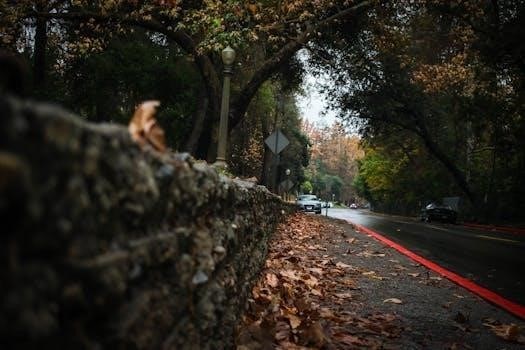Cahiers de la Bonne Chanson PDF⁚ An Overview
The Cahiers de la Bonne Chanson represent a collection of French and French-Canadian songs. These songs‚ compiled in cahiers‚ aimed to preserve cultural heritage and language. They were notably used in Quebec schools‚ promoting traditional music.
What are the Cahiers de la Bonne Chanson?
The Cahiers de la Bonne Chanson are collections of French and French-Canadian songs. Initially aimed at students of Séminaire de Saint-Hyacinthe‚ the cahiers were compiled by Abbé Charles-Émile Gadbois. They contained songs for various occasions and seasons. The publication sought to counter the increasing influence of American music on Quebec culture.
These collections grew popular‚ becoming available in schools and communities across Quebec‚ Acadia‚ and New England. Each cahier contained approximately fifty songs‚ spanning a variety of genres including folk songs and religious hymns. The success of the Cahiers marked generations of Québécois‚ instilling a love for French-language music.

The Origins of La Bonne Chanson
La Bonne Chanson originated in Quebec‚ founded by Abbé Charles-Émile Gadbois in 1937. Its purpose was to promote French-Canadian songs and culture. The organization sought to counter American musical influence in Quebec;
Abbé Charles-Émile Gadbois and the Founding of La Bonne Chanson
Abbé Charles-Émile Gadbois founded La Bonne Chanson in 1937. Gadbois‚ a composer and educator‚ sought to preserve French-Canadian culture through song. He initially distributed songs to his students at the Séminaire de Saint-Hyacinthe. The initiative expanded into publishing cahiers (booklets) of songs.
Gadbois’s work gained recognition‚ leading to the widespread use of La Bonne Chanson materials in Quebec schools. His efforts helped to instill a sense of cultural pride in generations of Quebecers.
The founding of La Bonne Chanson was a direct response to concerns about the increasing influence of American music. Gadbois believed that promoting traditional French-Canadian songs was essential to maintaining cultural identity.
His dedication led to a lasting legacy in Quebec’s musical and cultural landscape.
Countering American Music Influence
The rise of American music in the early 20th century posed a cultural challenge in Quebec. Recognizing this‚ Abbé Charles-Émile Gadbois established La Bonne Chanson as a means to counteract the growing influence. His goal was to safeguard French-Canadian identity by promoting traditional songs.
Gadbois’s efforts involved collecting and publishing French and French-Canadian songs in cahiers. These cahiers were distributed in schools and communities‚ providing an alternative to the increasingly popular American tunes. The initiative aimed to immerse young Quebecers in their own cultural heritage.
By offering readily accessible and culturally relevant music‚ La Bonne Chanson provided a powerful counterbalance to the pervasive American soundscape. This deliberate effort to preserve and promote local musical traditions helped to reinforce a sense of cultural distinctiveness during a period of significant cultural change.

Content and Structure of the Cahiers
The Cahiers contained over 500 songs across multiple volumes‚ becoming a vital part of Quebec’s cultural landscape. These were designed for educational use‚ emphasizing accessibility within schools and communities.
Number of Volumes and Songs Included
The Cahiers de la Bonne Chanson comprised a significant collection of French and French-Canadian songs‚ compiled into a series of volumes. Initiated by Abbé Charles-Émile Gadbois‚ the project aimed to preserve and promote French language and culture through music. The entire collection spanned across ten volumes‚ published between 1939 and 1955‚ although some sources mention eleven or twelve volumes.
Each cahier typically contained around 50 songs‚ resulting in a total of approximately 500 to 600 songs in the entire series. These songs ranged from traditional folk tunes to religious hymns and popular French melodies. The selections were carefully curated to appeal to a wide audience‚ including children‚ students‚ and adults.
The widespread availability and use of these cahiers in schools and communities across Quebec solidified their place in the province’s cultural heritage. They served as a valuable resource for music education and cultural preservation‚ ensuring that generations of Quebecers would be familiar with these timeless songs.
Availability in Schools and Communities
The Cahiers de la Bonne Chanson gained widespread popularity and were readily available in schools and communities throughout Quebec and French-speaking regions of Canada. Abbé Gadbois initially distributed the songs to students at the Séminaire de Saint-Hyacinthe‚ where he taught‚ before expanding the reach to other schools in the area.
The cahiers were sold as student books‚ making them accessible to a large portion of the population. Their inclusion in school curricula ensured that children learned and sang these traditional French and French-Canadian songs‚ fostering a sense of cultural identity and linguistic pride. Furthermore‚ the cahiers were available for purchase in bookstores and music stores.
Beyond the classroom‚ the Cahiers de la Bonne Chanson found their way into homes and community gatherings. Families would often sing together using these collections‚ and choirs and community groups incorporated the songs into their performances‚ solidifying their place as a cherished part of Quebec’s cultural landscape. Even today‚ the cahiers remain available in some locations‚ continuing to spread the legacy of French song.
Impact and Legacy
The Cahiers de la Bonne Chanson had a profound impact on Quebec culture. They helped preserve and promote French language and traditions. The legacy continues through ongoing availability and cultural relevance.
Influence on Quebec Culture and Identity
The Cahiers de la Bonne Chanson significantly shaped Quebec culture and identity. They provided a shared musical repertoire. These collections reinforced French language and cultural values in a time where American music became more prevalent. Singing these songs became an act of cultural affirmation. Generations of Quebecers grew up with these melodies‚ which evoked a sense of belonging and common heritage. The songs were used in schools‚ families‚ and communities. They fostered a collective memory and strengthened cultural bonds.
The Cahiers promoted Québécois identity. They offered an alternative to the increasing influence of American culture. The publication and widespread use of these songbooks were a deliberate effort to cultivate and maintain a distinct cultural identity. The project aimed to ensure the survival of French-Canadian traditions.
Continued Availability and Relevance
Despite the passage of time‚ the Cahiers de la Bonne Chanson remain available and remarkably relevant. Many of the cahiers are still found in libraries and music stores. They are in both Quebec and other French-speaking communities. This continuing availability allows new generations to discover these songs.
The songs evoke a sense of nostalgia for many. The Cahiers provide a tangible link to Quebec’s cultural past. They offer insight into the values and traditions that shaped the province’s identity. Singing these songs remains a way to connect with cultural heritage. The continued interest demonstrates their enduring significance and charm. The songs are still performed and appreciated today.

Availability of PDF Versions
Finding Cahiers de la Bonne Chanson in PDF format is possible through various online sources. Digital versions offer convenient access to these song collections‚ preserving them for modern audiences and future generations.
Sources for Downloading Cahiers de la Bonne Chanson in PDF Format
Locating PDF versions of the Cahiers de la Bonne Chanson may involve exploring several avenues online. Websites dedicated to preserving and sharing cultural heritage materials sometimes host scanned versions of these cahiers. Digital archives and libraries‚ particularly those specializing in Canadian or Quebec history and music‚ are valuable resources.
Additionally‚ online forums and communities focused on traditional music or genealogy may provide links to downloadable PDFs shared by enthusiasts. Certain online bookstores or educational platforms might also offer digital versions for purchase or free download. Be aware of copyright restrictions and ensure that downloads are from reputable sources to avoid malware or copyright infringement.
Keep in mind that availability can vary‚ so persistent searching and exploring different platforms may be necessary to find the specific volumes or songs you seek. The Internet Archive is also a great resource.

Related Publications and Materials
Beyond the Cahiers de la Bonne Chanson‚ several related publications exist. These include songbooks‚ magazines‚ and educational materials. They further explore French-Canadian music and culture‚ expanding on the themes present in the cahiers.
La Bonne Chanson à l’école and Other Collections
Alongside the primary Cahiers de la Bonne Chanson‚ supplementary collections enriched the musical landscape. La Bonne Chanson à l’école‚ a notable example‚ offered a curated selection of fifty religious and secular songs tailored for the Christmas season‚ as well as songs for the holidays.
Other related collections included Chants pour le temps des Fêtes and Cent plus belles chansons. Additionally‚ Vingt choeurs à voix égales achieved significant popularity‚ mirroring the success of the primary cahiers. These additional resources‚ along with accompaniment books‚ broadened access to traditional French-Canadian music and culture‚ reinforcing the legacy of La Bonne Chanson within educational settings and communities. These collections served to further disseminate the repertoire‚ ensuring its reach across generations.
Musique et Musiciens Magazine
Expanding on the influence of the Cahiers de la Bonne Chanson‚ Musique et Musiciens magazine further promoted French and French-Canadian music. This monthly review‚ published between 1952 and 1954‚ was founded by Abbé Charles-Émile Gadbois‚ the creator of La Bonne Chanson‚ and Conrad Letendre served as editor. The magazine provided a platform for musical discourse‚ analysis‚ and appreciation. It offered insights into the broader musical landscape of the time‚ complementing the song collections found in the cahiers.
This publication allowed for a more in-depth exploration of the music and musicians that Abbé Gadbois championed. While the cahiers provided the scores and lyrics‚ Musique et Musiciens offered context and commentary‚ solidifying La Bonne Chanson’s role in Quebec’s cultural scene.

No Responses